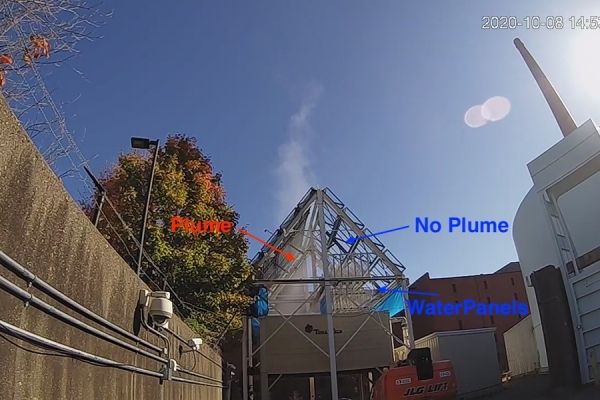About two-fifths of all the water that gets withdrawn from lakes, rivers, and wells in the U.S. is used not for agriculture, drinking, or sanitation, but to cool the power plants that provide electricity from fossil fuels or nuclear power. Over 65 percent of these plants use evaporative cooling, leading to huge white plumes that billow from their cooling towers, which can be a nuisance and, in some cases, even contribute to dangerous driving conditions.
Now, a small company based on technology recently developed at MIT by the Varanasi Research Group is hoping to reduce both the water needs at these plants and the resultant plumes — and to potentially help alleviate water shortages in areas where power plants put pressure on local water systems.
The technology is surprisingly simple in principle, but developing it to the point where it can now be tested at full scale on industrial plants was a more complex proposition. That required the real-world experience that the company’s founders gained from installing prototype systems, first on MIT’s natural-gas-powered cogeneration plant and then on MIT’s nuclear research reactor.
In these demanding tests, which involved exposure to not only the heat and vibrations of a working industrial plant but also the rigors of New England winters, the system proved its effectiveness at both eliminating the vapor plume and recapturing water. And, it purified the water in the process, so that it was 100 times cleaner than the incoming cooling water. The system is now being prepared for full-scale tests in a commercial power plant and in a chemical processing plant.
Read more at Massachusetts Institute of Technology
Image: The cooling tower of MIT’s nuclear plant has demonstrated the effectiveness of the new water recovery system. The right side of the tower has the new system installed, eliminating its plume of vapor, while the untreated left side continues to produce a steady vapor stream.
(Credit: Image: Courtesy of the researchers)


